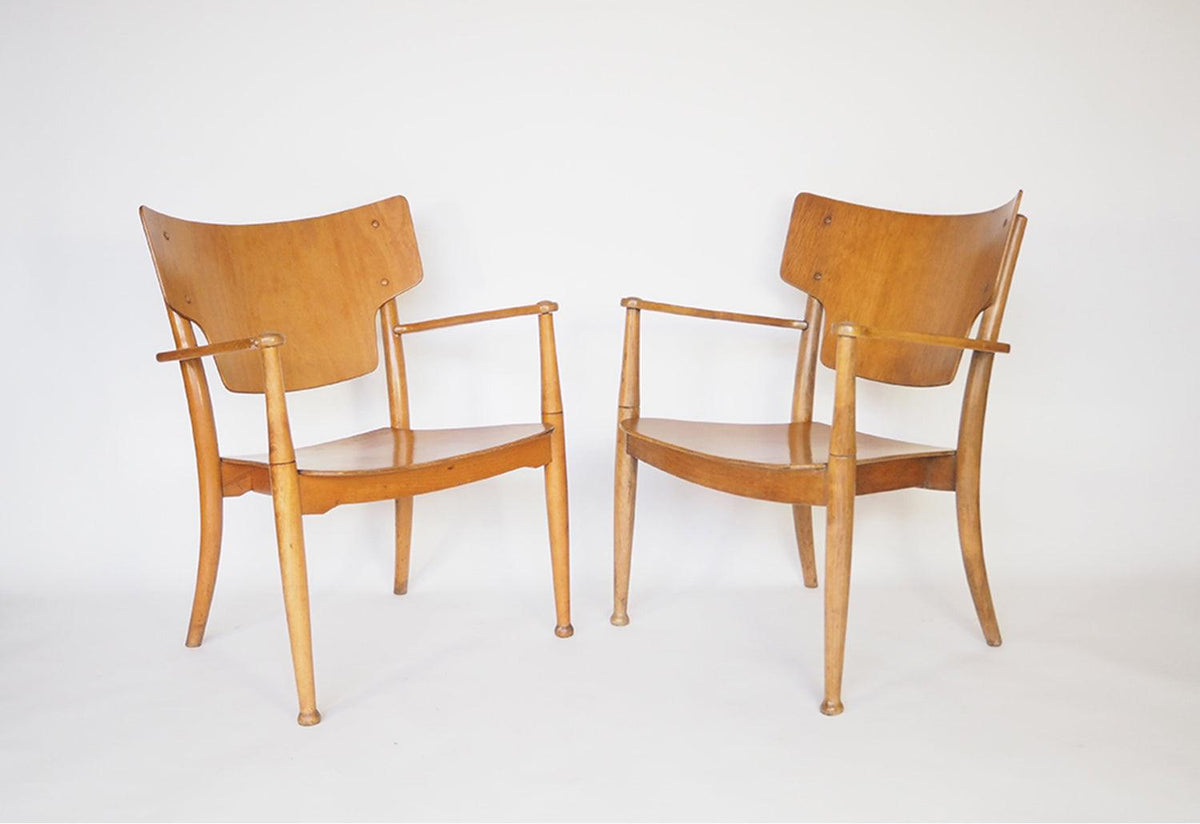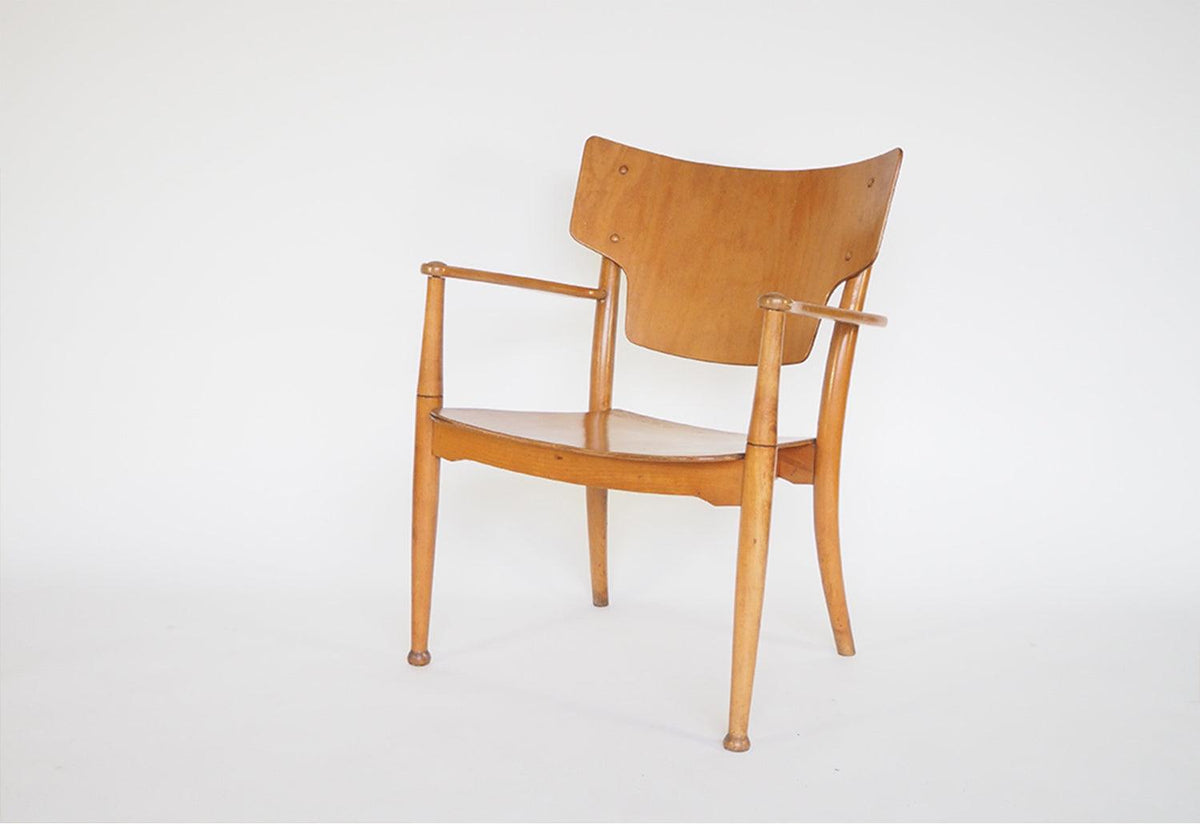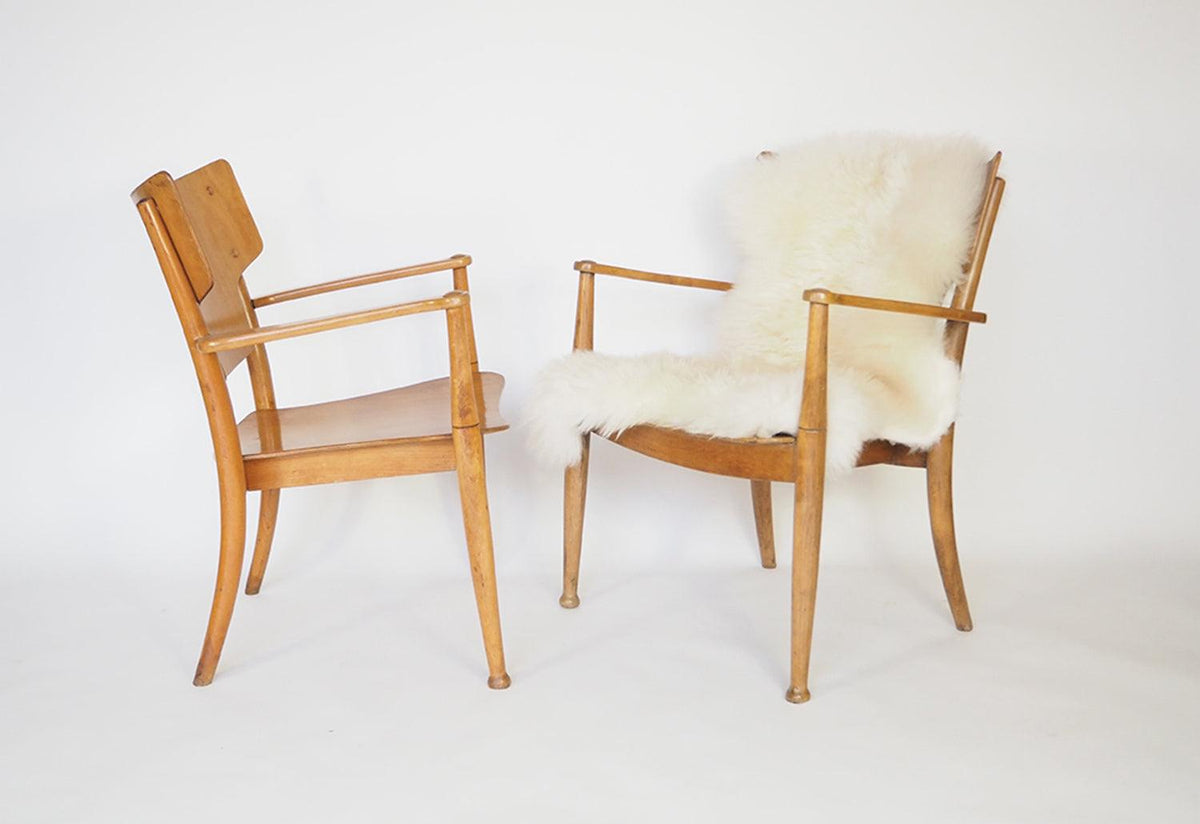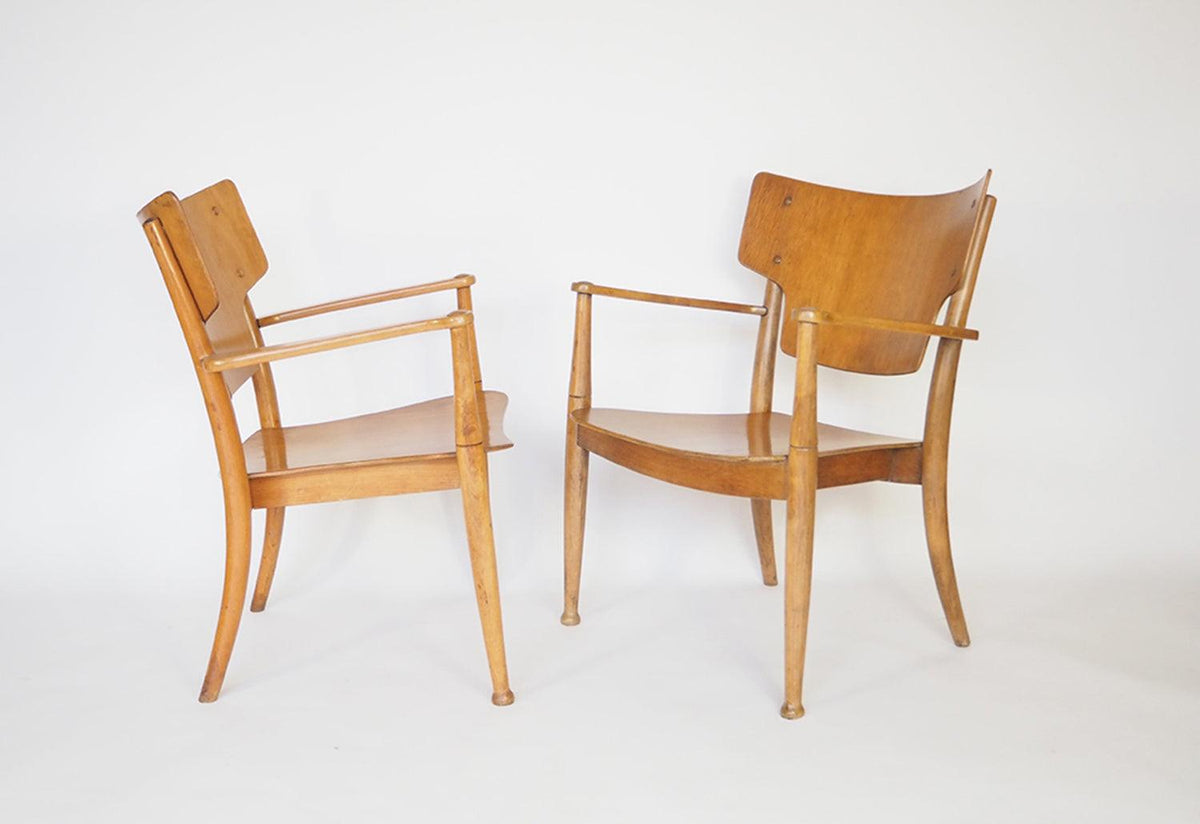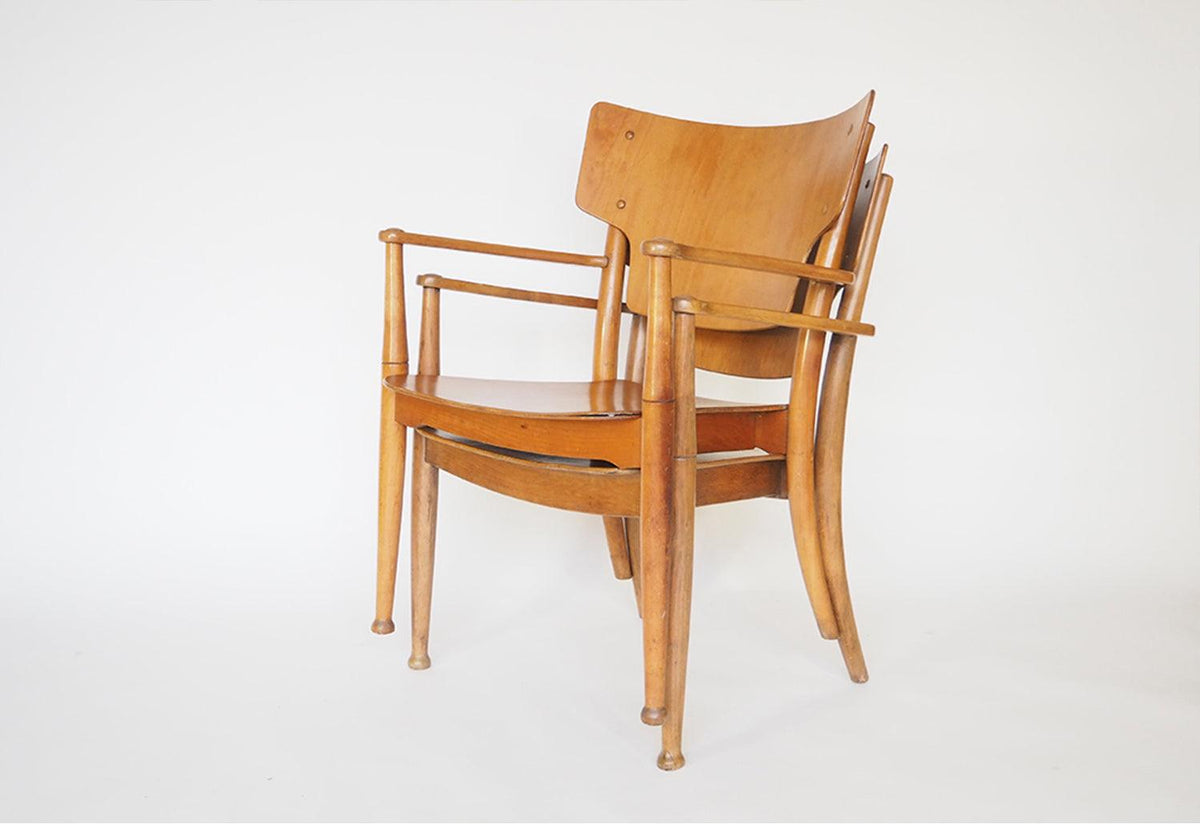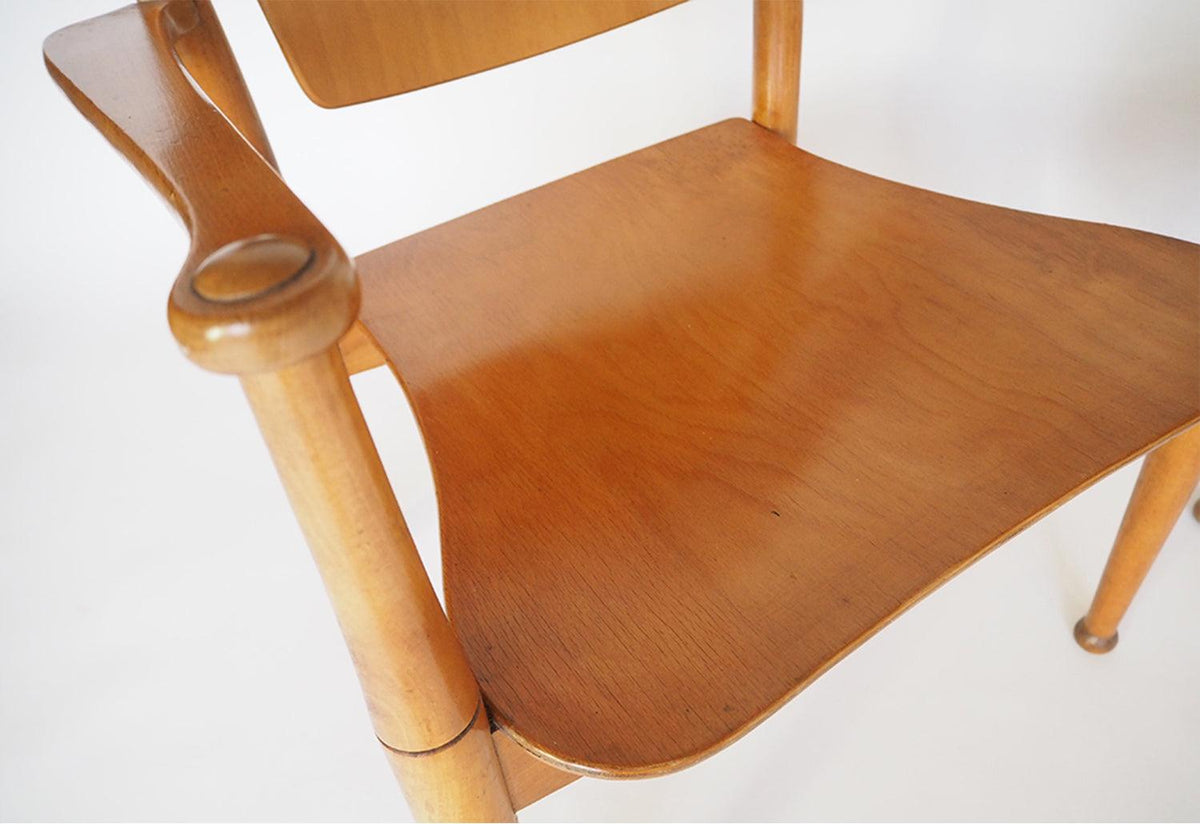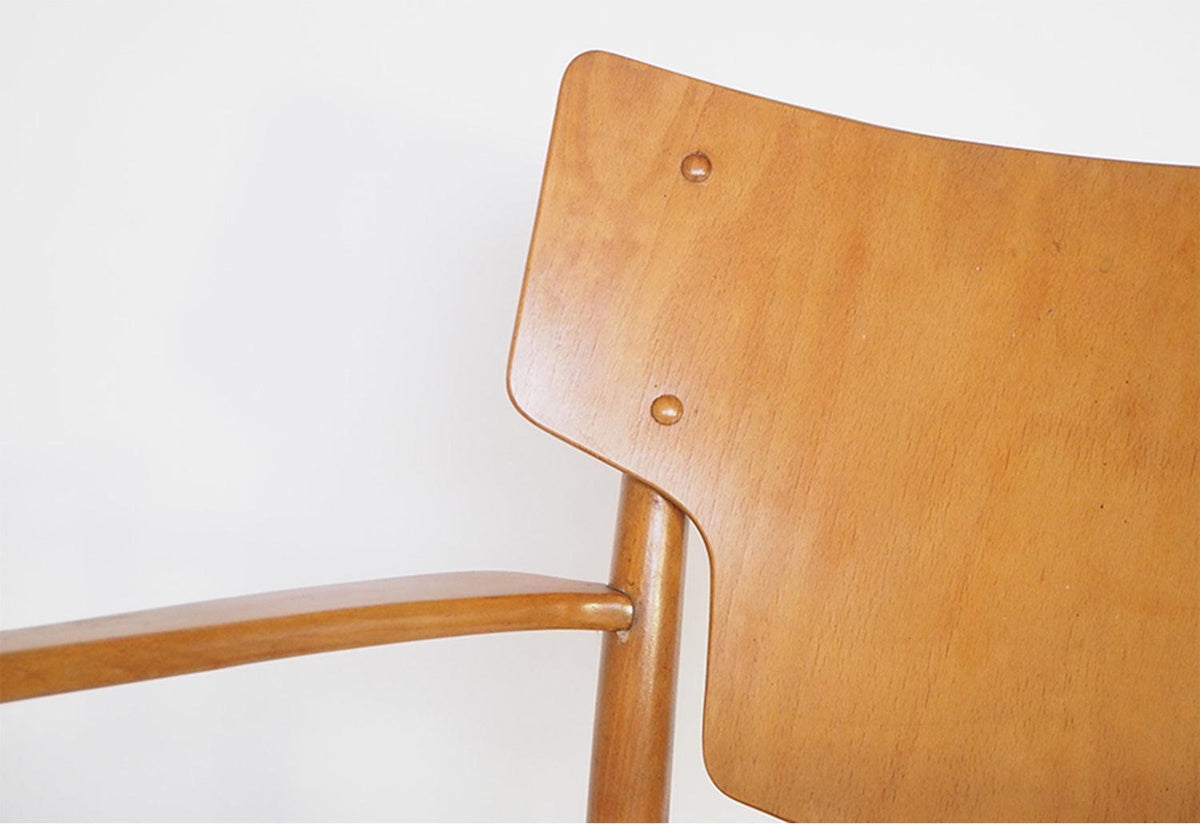Portex chairs, 1944
Portex chairs by Peter Hvidt and Orla Molgaard-Nielsen, 1944.
The Portex chair was created in both dining and lounge versions. The design was progressive in many ways. In response to pressures from the USA, Britain and France, the Danish furniture producers needed to create more industrialized designs to echo contemporary work by the likes of Eames. The Portex employed a formed plywood seat and back, adopting organic shapes influenced by fine art, and offering sufficient comfort to be used without upholstery. The design for the frames allowed the chairs to stack, which was one of the first for the Danish furniture industry. In the mid-1940s the Portex was quite a departure from the more classical forms and techniques employed by Danish designers and manufacturers and proved to have an influential impact on the industry.
Peter Hvidt and Orla Molgaard-Nielsen were both graduates of Royal Danish Academy of Fine Art. The duo founded Hvidt & Molgaard Architects in 1944 and went on to create numerous lasting designs in furniture and lighting. Their international clients included Fritz Hansen, Le Klint and Thonet. Their AX chair of 1950 was entered into the MoMA collection and they went on to produce over 250 furniture designs together. They were awarded Diploma of Honour at the Milan Triennale in 1951 and again in 1954.
Their architectural practice was equally well recognized and public buildings, factories and even bridges are praised for their light, clear and simple aesthetics. Whilst both designers retired in 1975, the practice continues to be run by Hvidt’s son.
Vintage Archive
twentytwentyone was founded with a strong representation of original, vintage design. This piece has now found a new home, but joins our extensive vintage archive.
Visit our Vintage Furniture section for available pieces.
Trade Professional?
Get in touch for trade pricing, project management and consolidated deliveries.
Description

Portex chairs by Peter Hvidt and Orla Molgaard-Nielsen, 1944.
The Portex chair was created in both dining and lounge versions. The design was progressive in many ways. In response to pressures from the USA, Britain and France, the Danish furniture producers needed to create more industrialized designs to echo contemporary work by the likes of Eames. The Portex employed a formed plywood seat and back, adopting organic shapes influenced by fine art, and offering sufficient comfort to be used without upholstery. The design for the frames allowed the chairs to stack, which was one of the first for the Danish furniture industry. In the mid-1940s the Portex was quite a departure from the more classical forms and techniques employed by Danish designers and manufacturers and proved to have an influential impact on the industry.
Peter Hvidt and Orla Molgaard-Nielsen were both graduates of Royal Danish Academy of Fine Art. The duo founded Hvidt & Molgaard Architects in 1944 and went on to create numerous lasting designs in furniture and lighting. Their international clients included Fritz Hansen, Le Klint and Thonet. Their AX chair of 1950 was entered into the MoMA collection and they went on to produce over 250 furniture designs together. They were awarded Diploma of Honour at the Milan Triennale in 1951 and again in 1954.
Their architectural practice was equally well recognized and public buildings, factories and even bridges are praised for their light, clear and simple aesthetics. Whilst both designers retired in 1975, the practice continues to be run by Hvidt’s son.
Materials

Formed plywood seat and back.
Product Downloads

Help / Advice

-
Call: 0207 837 1900
-
Email: showroom@twentytwentyone.com
-

